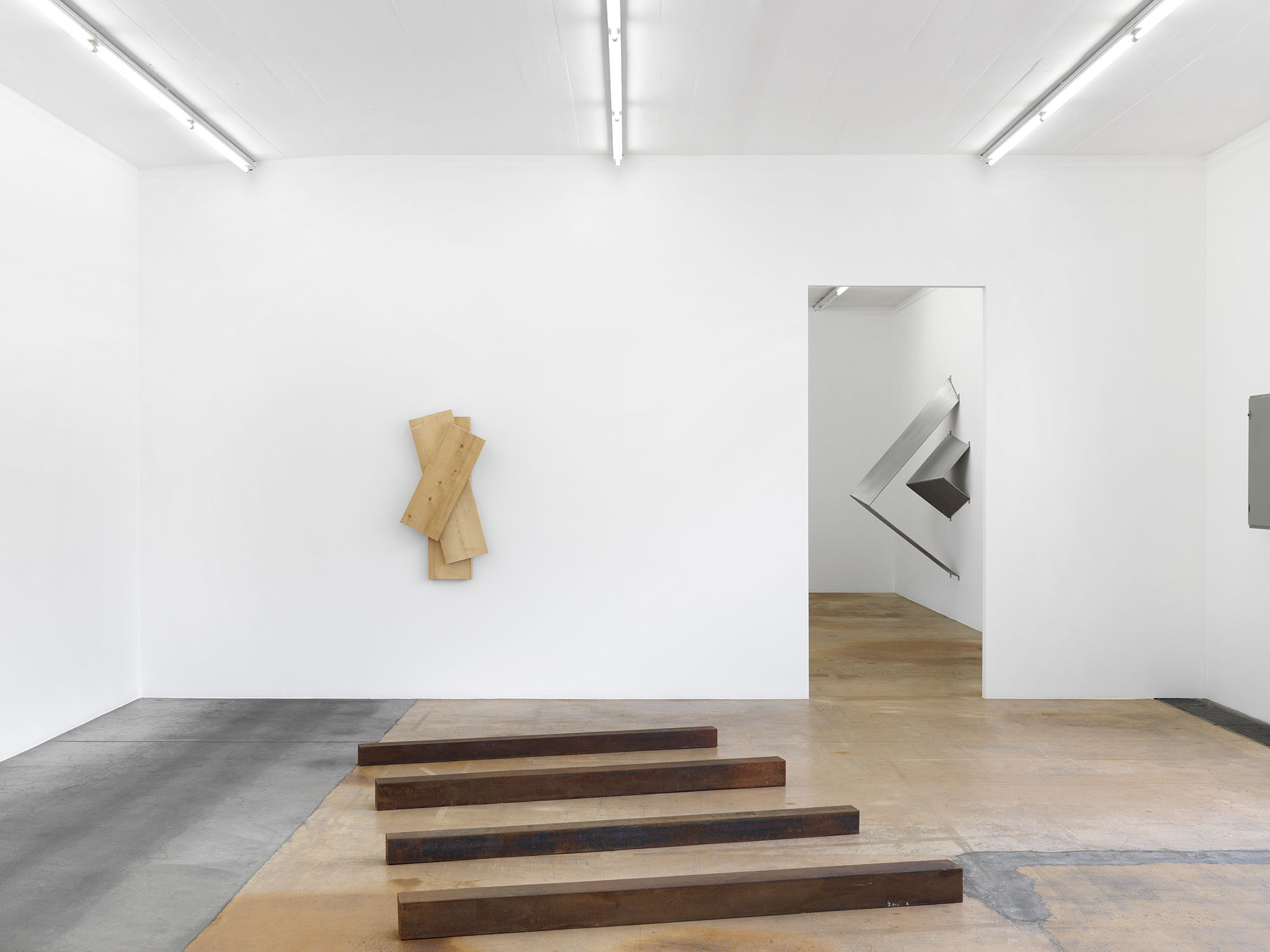Richard Nonas (*1936, New York) has devoted himself to sculpture from the beginning of the 1970s, after taking courses in literature and social anthropology and also spending years studying the Indians of the USA and Canada. Nonas describes his way of working as follows: “I set up each sculpture to open then close again the part of the world where it is standing. I set it up to transform a totally new story into human existence. I set up my sculptures to give shape to a changing past. To recognise the very possibility of history in a world that is fleeing away.”
Made up of 37 steel pieces of the same length but of a variable height, Riverrun (from Swerve to Bend) can be set up in various ways: it is possible to use all of its elements, or just some of them. In other words, this work can be adapted to the space displaying it, which is also reconfigured by it.
This sculpture can immediately be associated with a minimalist aesthetic, with a simplicity of forms, modularity and repetitiveness, making one work into a whole — all of the aspects associated with American art from the late 1960s can be found here. It also employs the horizontality of space. Riverrun (from Swerve to Bend) unfurls under our feet — it is in fact possible to walk across it to experience it — stretched out across the floor in a distinctly constructed way. This is an element which is clearly present among the American artists of Nonas’s generation, such as Robert Morris, Carl Andre or Richard Serra. This type of work confronts the entire history of classic statuary which presents strict forms, that were upright and around which the spectators could walk. This is nothing like it: it is the floor itself that becomes the pivotal point, rather than the plinth of the sculpture, and is its entire zone of appearance.
There is another possible story about such horizontality. Marcel Duchamp was doubtlessly one of the first 20th century artists to produce works which were low (spatially speaking), with works tumbling down to the floor (3 Standard Stoppages, 1913/1914) or which were fixed onto the ground in such a way that we might tumble over them (Trap, 1917). In a figurative and surrealist vein, Alberto Giacometti also explored just the same horizontal spacing with his Woman With her Throat Cut (1932), a bronze skeleton placed on the ground. The American artists of Nonas’s generation then extended this horizontal exploration of space. The work of Nonas himself stands as a meaningful moment in this exploration that can also be led externally, towards natural landscapes.
- Following this presentation, the work was acquired thanks to the support of the Friends Association of MAMCO and the Fondation Mattioli-Rossi


